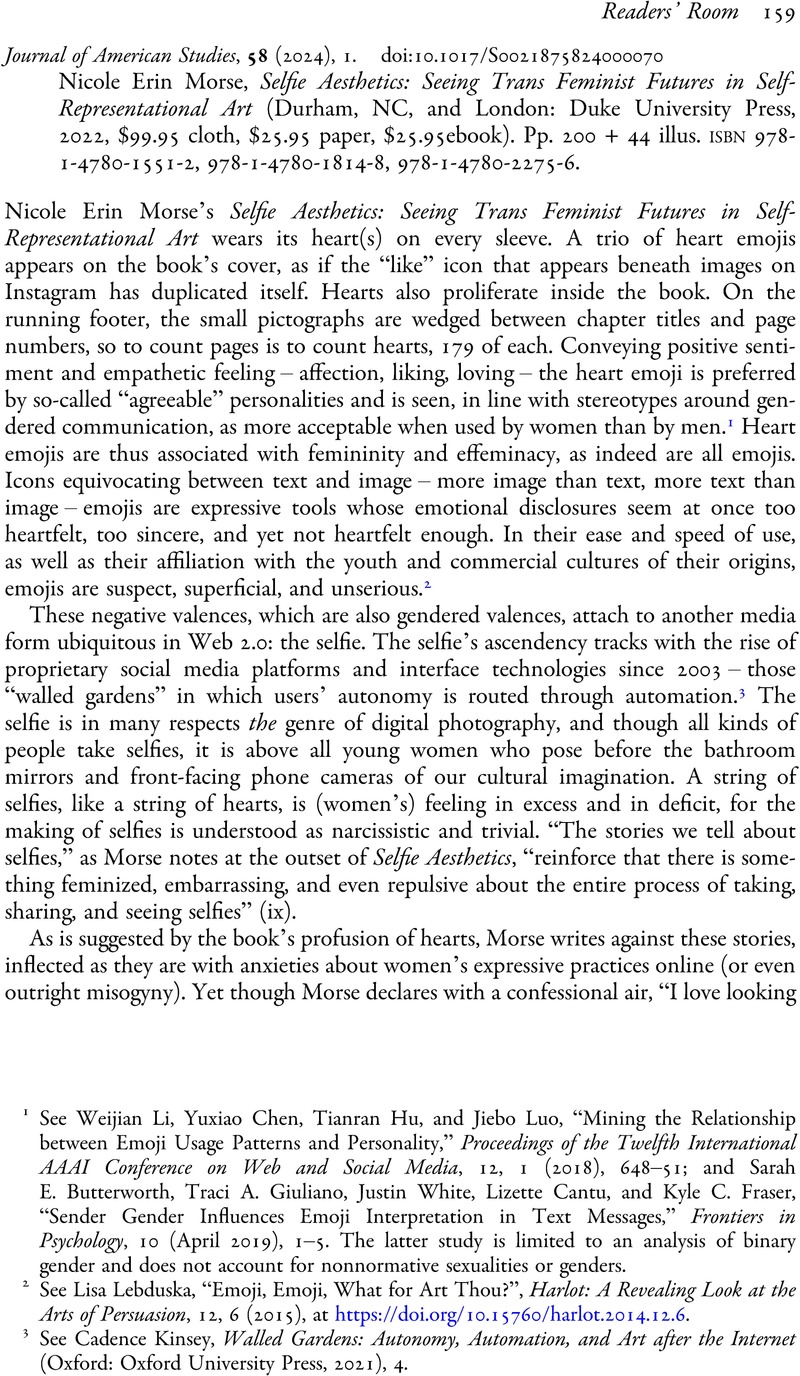No CrossRef data available.
Article contents
Nicole Erin Morse, Selfie Aesthetics: Seeing Trans Feminist Futures in Self-Representational Art (Durham, NC, and London: Duke University Press, 2022, $99.95 cloth, $25.95 paper, $25.95ebook). Pp. 200 + 44 illus. isbn 978-1-4780-1551-2, 978-1-4780-1814-8, 978-1-4780-2275-6.
Review products
Published online by Cambridge University Press: 07 May 2024
Abstract

- Type
- Readers' Room
- Information
- Copyright
- Copyright © The Author(s), 2024. Published by Cambridge University Press in association with British Association for American Studies
References
1 See Li, Weijian, Chen, Yuxiao, Hu, Tianran, and Luo, Jiebo, “Mining the Relationship between Emoji Usage Patterns and Personality,” Proceedings of the Twelfth International AAAI Conference on Web and Social Media, 12, 1 (2018), 648–51Google Scholar; and Butterworth, Sarah E., Giuliano, Traci A., White, Justin, Cantu, Lizette, and Fraser, Kyle C., “Sender Gender Influences Emoji Interpretation in Text Messages,” Frontiers in Psychology, 10 (April 2019), 1–5CrossRefGoogle ScholarPubMed. The latter study is limited to an analysis of binary gender and does not account for nonnormative sexualities or genders.
2 See Lebduska, Lisa, “Emoji, Emoji, What for Art Thou?”, Harlot: A Revealing Look at the Arts of Persuasion, 12, 6 (2015)Google Scholar, at https://doi.org/10.15760/harlot.2014.12.6.
3 See Kinsey, Cadence, Walled Gardens: Autonomy, Automation, and Art after the Internet (Oxford: Oxford University Press, 2021), 4Google Scholar.
4 See Campt, Tina M., Listening to Images (Durham, NC and London: Duke University Press, 2017)Google Scholar; and Azoulay, Ariella Aïsha, Potential History: Unlearning Imperialism (London and New York: Verso, 2019), 16Google Scholar.



